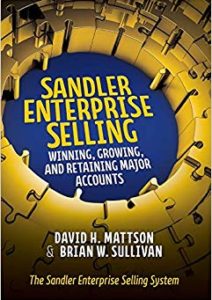“In the dark of the night, every cat’s a leopard.” This old Indian saying provides keen insight into enterprise selling and understanding the sophisticated sales competition who come prepared in the enterprise arena. We must know them and account for them. But what do we see in much of the competitive analysis done today?
Competitive analysis usually comes in one of two flavors. First, there’s the competitive outlook often found in business planning to prove an initiative’s viability. It’s interesting, but typically very general and not at all helpful in tracking a competitor in a specific deal. The other variety involves extensive investigation and a ton of data, forcing a deep and wide view but lacking the focus needed for specific situations. And even if you had the time, energy and resources for such deep competitive dives, how much of what you discovered would simply be superfluous documentation?
So, what can you do? How can you turn on the lights to see if the cat in the tall grass is a leopard or a tabby?
You start with a framework to identify and understand the ten most important competitive focus areas:
- Facts
- Products/Services
- Performance
- Markets
- People
- Positioning
- Value Proposition/Pricing
- Accounts
- Strengths/Weaknesses
- Plans
With this framework, the key is to target only the information that is singularly relevant to a specific competitor and situation. Information that is, simply put, impactful. In enterprise selling, it’s mandatory that you be laser-focused. The mountains of information available can be very distracting and the research involved can be a full-time job. Sales teams can’t afford to spend their time on learning that’s far from the critical path. The magnifying glass must be pinpointed information that drives wins. Nothing more, nothing less.
Let’s think about an example and let’s focus on the “People” section in the framework above. In many competitive analysis templates, data-driven directives suggest extensive analysis of competitive org charts and research into the firm’s top executives. If those high-level executives are keenly relevant to your specific deal and have a direct impact on your success, it makes sense to target your research on them. But it’s highly likely that others in the competitive firm will have a greater impact. Maybe a competitive sales rep you frequently face off against or an industry expert with deep experience in the prospect account’s vertical. If these individuals are specifically relevant in the deal, then your ability to understand them and strategize against them is critical. In fact, it may well dictate the outcome. And remember – only you know who is most relevant, who is most impactful. Identify them and work to understand them. But don’t work to understand everyone in the organization and certainly not those targeted as “important” by some boilerplate competitive analysis template. And that same mindset regarding the true relevance of information applies to the other nine areas of the framework as well.
How helpful would it be to have a laser-focused understanding of your key competitors in a specific deal? No unnecessary information, only the truly impactful. Streamlined and targeted to increase your chances of winning.
And the ten detail areas in the framework cover a wide landscape allowing for most competitive topics to be covered. Some areas, of course, will be less relevant than others in specific deals – they’ll get less or no focus. Doesn’t that make sense? The frame of reference should be focused completely on you and your judgment and should not be shoehorning your reality into some template. That just doesn’t work.
After researching and populating the areas that are relevant to the specific competitor and deal, then it’s time to move on to actions. In enterprise selling, it’s all about forward motion. No event should represent a snapshot in time. Everything must look ahead.
As such, you craft five or six significant actions resulting from your work in the sections. Specific, date-bound actions, including RACI responsibility designations. And then, of course, you act.
Competitive analysis is critical, but it simply must be conducted in a streamlined and practical way. Because at the end of the day, it’s not the research that matters. It’s the impact.
Get your free trial of Pipeliner CRM now.















































Comments